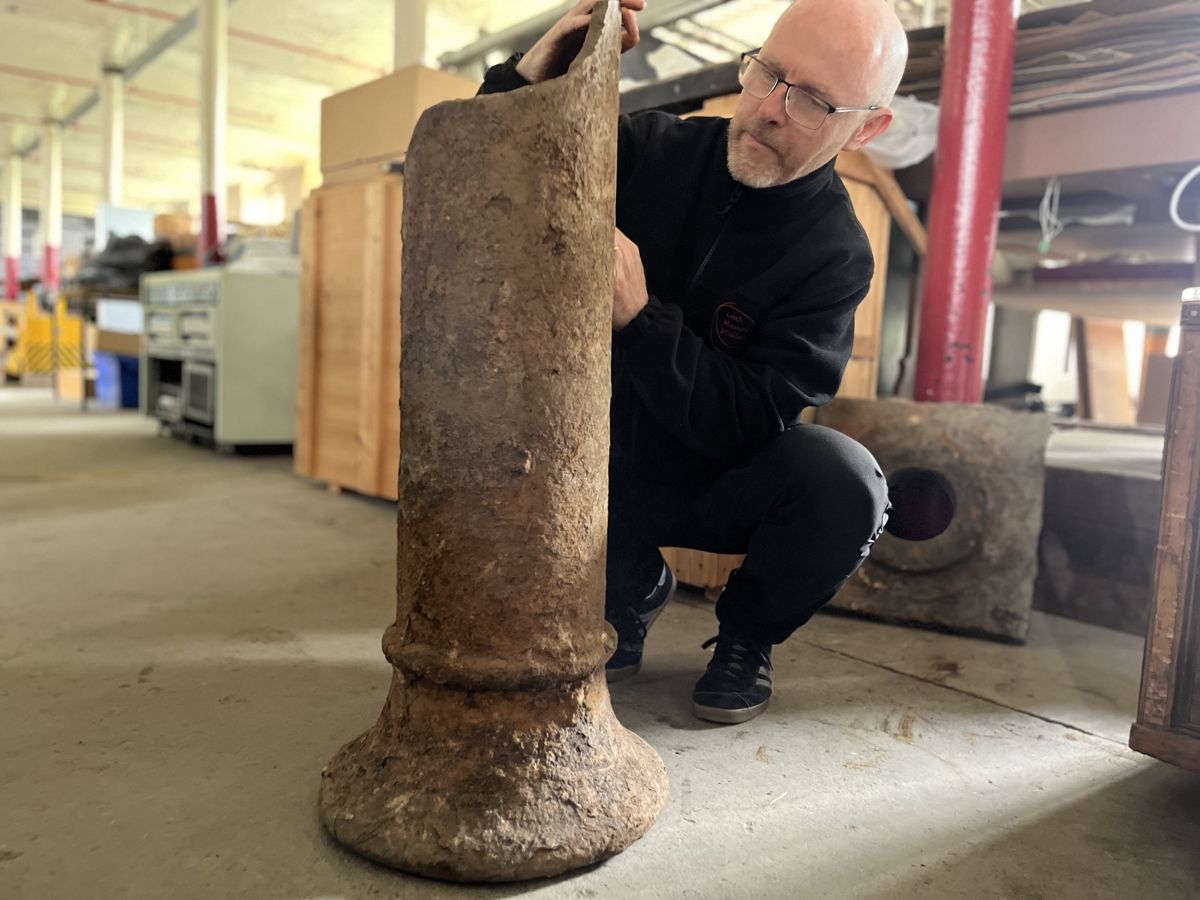At the Marsh Lane station excavation in Leeds, archaeologists rediscovered remnants of the Leeds to Selby Railway, uncovering Georgian architecture, ironworks, and a unique U-shaped workshop that highlight the city’s vibrant industrial history. These significant findings, including original cast iron pillars and stone sleepers, are set to be preserved at the Leeds Industrial Museum, ensuring that future generations can connect with the rich legacy of innovation and engineering that shaped Leeds.
What was discovered at the Marsh Lane station excavation in Leeds?
During the excavation at Marsh Lane station in Leeds, archaeologists unearthed remnants of the historic Leeds to Selby Railway, including Georgian architecture, ironworks, original cast iron pillars, stone sleepers, and a U-shaped workshop. These findings shed light on the city’s industrial heritage and the early days of train travel.
Unearthing Historical Significance
The city of Leeds, steeped in rich industrial history, has once again revealed a chapter from its illustrious past. During a meticulous excavation in the city centre, a team from CFA Archaeology Limited, alongside the West Yorkshire Joint Service’s Archaeology Advisory Service, brought to light the remains of the former Marsh Lane station. This station is not just any relic; it is the cornerstone of what was the Leeds to Selby Railway, an integral piece of the city’s transport evolution, dating back to an era when the chug of the steam engine was a symbol of progress and innovation.
Historic findings included substantial ironworks and remnants of Georgian architecture, indicative of the period when the station served as a bustling hub for passengers and freight. These discoveries not only connected residents with a tangible piece of their heritage but also presented a unique opportunity to preserve them for posterity.
The Leeds Industrial Museum has swiftly intervened to safeguard these treasures. As John McGoldrick, curator of industrial history at Leeds Museums and Galleries, remarked, “Discoveries like this are a fascinating reminder of the history that’s all around us and the foundations of industry and innovation that the city we know today is built on.” The museum’s new collection boasts one of the station’s original cast iron pillars, designed to support the roof and serve as rainwater downpipes, and a pair of stone sleepers, precursors to the wooden sleepers commonly seen today.
A Glimpse Into the Industrial Dawn
The significance of the first train’s departure from Marsh Lane station on September 22, 1834, at approximately 6:30 am, resonates through time. However, with no remaining artistic depictions of the station, its appearance during its pioneering days was largely left to imagination—that is, until now. Excavators were surprised to unearth a dual-level construction, an innovative design for the time, featuring train tracks on an elevated podium and a ground-level entrance for passengers.
Further explorations shed light on a U-shaped workshop that housed the locomotives, essential for the continual servicing and repairs needed to keep the engines of industry running. Additionally, a 15-meter deep well was discovered, highlighting the era’s engineering prowess and its dedication to providing essential resources such as water for the steam-powered trains.
By the 1860s, the need for progress led to the replacement of the original station with a grain warehouse, followed by a revamped station, which served the city until its eventual closure in 1958. Today, only a boundary wall and gate piers on Marsh Lane stand as testaments to the early station’s existence.
A Legacy Preserved for the Future
The excitement surrounding these findings is palpable, with plans to possibly feature these pieces at Leeds Industrial Museum, where they can contribute to the narrative of the city’s bygone era. Councillor Salma Arif, Leeds City Council’s executive member for adult social care, active lifestyles, and culture, emphasized the importance of such preservation, stating, “That history can be seen everywhere, but it’s important that we also preserve those parts of our city’s story which are no longer visible, so future generations can learn about how Leeds was built.”
Enshrined within Leeds Industrial Museum’s walls is the testament to the city’s ingenuity and enterprising spirit. Housing models and machinery, the museum pays homage to the city’s industrial heritage and the inventors and engineers who were the linchpins of this growth.
For anyone interested in exploring this integral part of Leeds’ history, further details can be found by visiting the Leeds Industrial Museum – Leeds Museums & Galleries.
In conclusion, the excavation at Marsh Lane station has been a gateway to understanding the past, offering a unique perspective on the origins of the city’s industrial landscape. It underscores the significance of historical conservation and its contribution to the collective memory and identity of Leeds.
- Archaeologists at the Marsh Lane station excavation in Leeds discovered remnants of the historic Leeds to Selby Railway, including Georgian architecture and ironworks.
- Significant findings from the excavation include original cast iron pillars, stone sleepers, and a unique U-shaped workshop that highlight Leeds’ industrial heritage.
- The Leeds Industrial Museum is set to preserve these discoveries, ensuring future generations can connect with the city’s rich legacy of innovation and engineering.
- The excavation revealed a dual-level construction of the station, designed to facilitate both train tracks and passenger access, showcasing early engineering ingenuity.
- Councillor Salma Arif emphasized the importance of preserving historical artifacts to educate future generations about Leeds’ development and industrial history.
